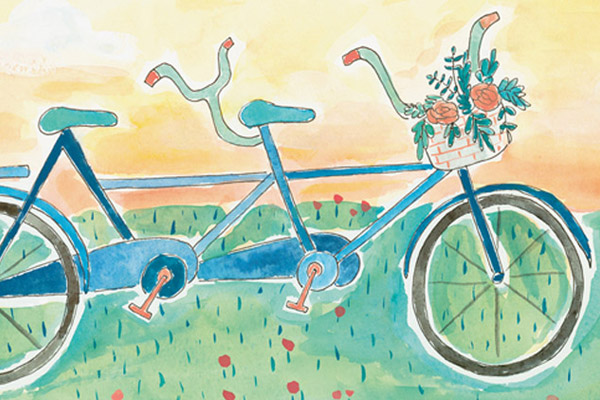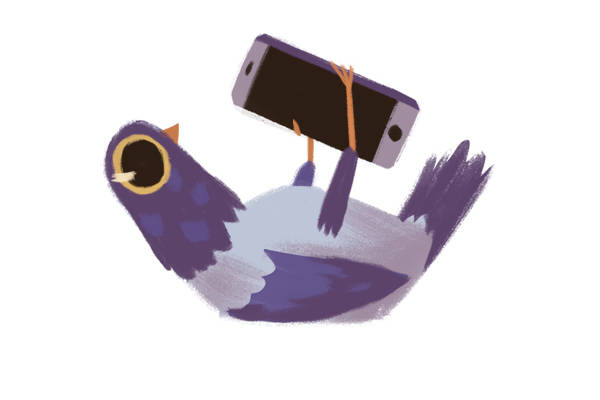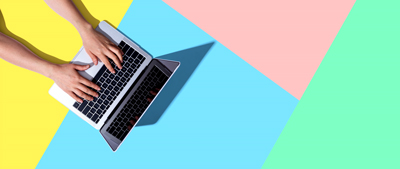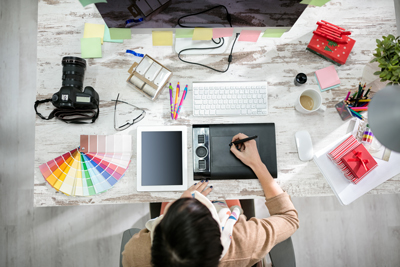Nostalgia for ‘80s-era computer text has created a very popular “glitch” effect in the modern design community—possibly because it’s easy enough to create in minutes. Reminiscent of 3D images without glasses, a glitch effect calls to mind nostalgic arcade games, computer programs, and bitmap imagery. It’s popular in the niche subculture of vaporwave art and might have even been the inspiration for the TikTok logo. To the untrained eye, it might appear complicated, but once you look closely, you can break the effect into simple pieces. There is a neon blue and hot pink “haze” on either side of the text, plus some sections that appear to be shifted to the right and left. To achieve this same effect yourself, you’ll actually only need two text layers—the white color in the middle is created by the overlap of the other two, as you’ll soon find out. You can use Adobe InDesign, Illustrator, or Photoshop to complete this tutorial, though the last optional step will be easiest in Photoshop. Once you’ve decided what text you would like to use, you can open your program of choice and get started.
- Create two copies of your text and use two contrasting colors.
You can use any font, but I went with a free digital one called “retro computer” to match the effect. You can copy your text box by holding down the alt or option key and then dragging the text box. Then, just highlight the text and select your colors! My go-to is to use the neon pink and blue from the default color swatches.

- Put both text boxes on top of each other. The glitch effect looks most realistic when the text is in exactly the same position, just off-set a couple pixels to the right or left.
- Change the opacity blending mode to “screen” if you’re using a black background or “multiply” if you’re using a white background.
Blending modes control the way that colors overlap in Adobe programs. You can find them in most of the software (InDesign, Illustrator, Photoshop, Premiere Pro, After Effects, and more). They are meant to mimic the ways various colors interact on a digital interface, so a lot of them are built to replicate the techniques of color mixing found in film development, painting, and drawing.
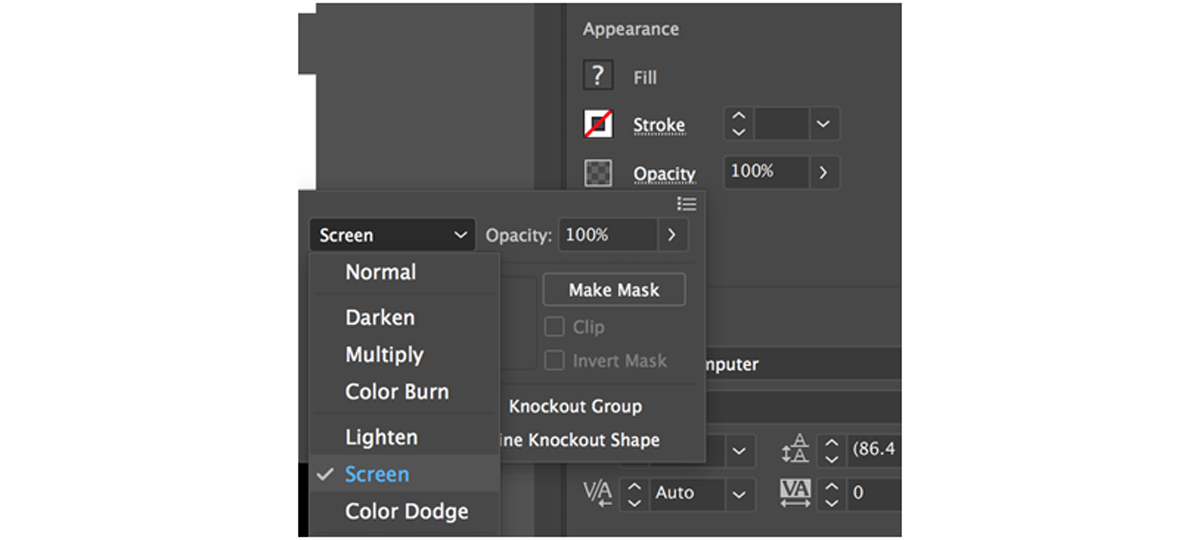
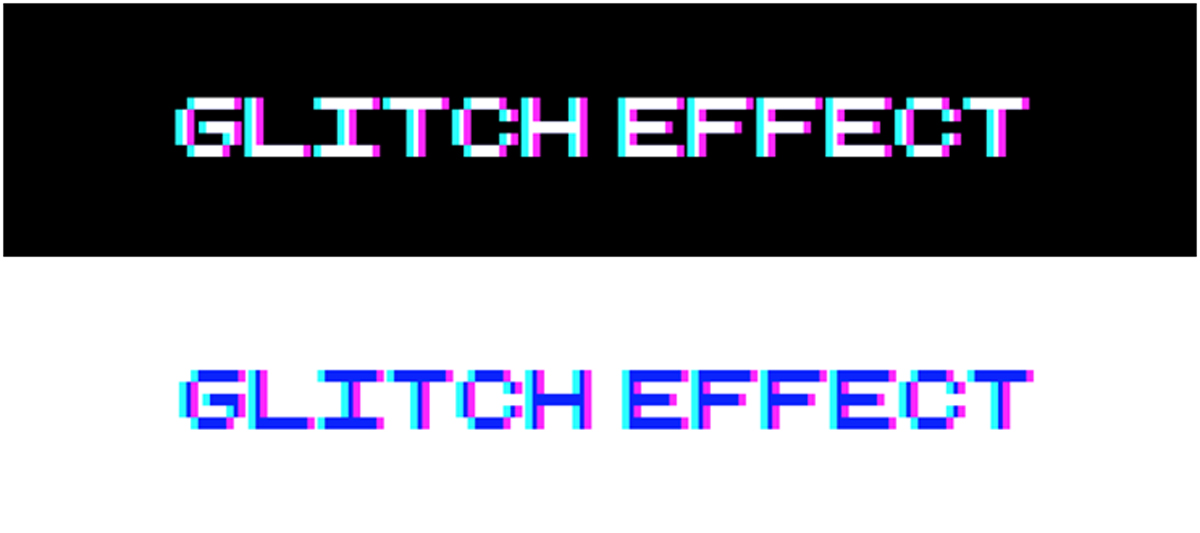
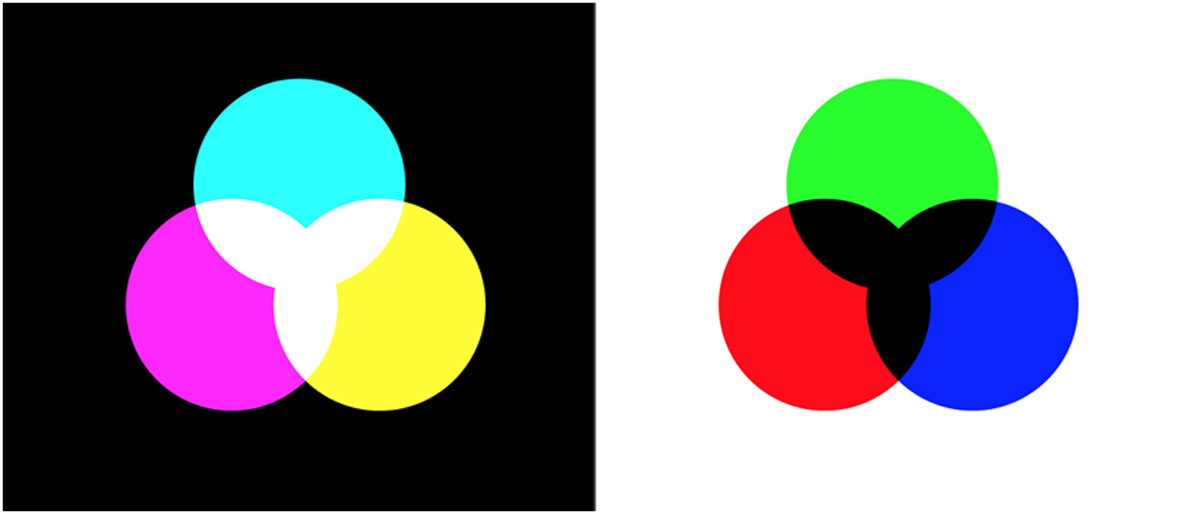 Additive vs. subtractive color mixing. Additive color mixing will create white when using cyan, magenta, and yellow (the “CMY” of “CMYK”) and subtractive color mixing will create black when using red, green, or blue (“RGB”).
Additive vs. subtractive color mixing. Additive color mixing will create white when using cyan, magenta, and yellow (the “CMY” of “CMYK”) and subtractive color mixing will create black when using red, green, or blue (“RGB”).
- Optional: If you’re using Photoshop, merge the layers and shift sections of the text.


To learn more about blending modes—and the color science behind them—read up on all of the different options here. Are you a current student? See how you can save up to 60%.


